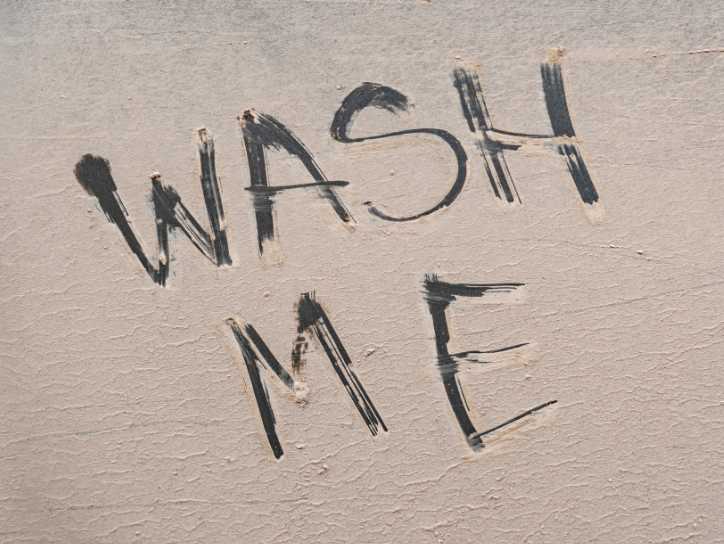I can’t image my vehicle being covered by any kind of grime, dirt, mud, etc.
It’s not under control. However, maintaining the shine of your vehicle goes beyond regular oil changes and tire rotations. Isn’t it?
A crucial aspect of car care often overlooked is the timing of car washes.
Choosing the right time to wash your car not only ensures a clean exterior but also contributes to the longevity of your vehicle’s paint and finish.
In this article, I’ll explore the best times to give your car the attention it deserves. Something that I’ve tried and experienced on a 4 or 2-wheeler.

So, what’s the Best Time to Wash Your Car?
The best time to wash your car is during mild weather, avoiding extreme temperatures. You can opt. for a day with no rain, minimal wind, and when the vehicle surface is not too hot or cold for optimal cleaning and drying results.
Let’s understand in detail, shall we?
1. Washing in Summar
You must be thinking that washing your car under the scorching sun might seem like a quick and convenient option, but it’s a common misconception.
The intense heat can cause the water and soap to dry too quickly, leaving behind water spots and soap residue.
Additionally, the high temperatures can bake contaminants like bird droppings and tree sap onto your car’s surface, making them more challenging to remove.
Ideal Time: You are advised to opt. for early mornings or late evenings when the sun is less intense. This ensures that the water and cleaning agents have ample time to do their job before drying, leaving your car spotless.
| Condition | Time |
| Early Mornings | 7 to 9 AM (I prefer this time) |
| Late Evenings | 5 to 6 PM |
2. Washing in Rainy Season
While rain can help your vehicle off loose dirt, it often contains impurities that can harm your car’s finish. Acidic rainwater, combined with pollutants in the atmosphere, can lead to water spots and paint damage over time. Washing your car shortly after rain can mitigate these risks.
Ideal Time: Wait for a few hours after the rain has stopped to ensure that the atmosphere is free from contaminants. Then, give your car a thorough wash to remove any residue left by the rain.
Note: Make sure to get your vehicle dry. Any kind of moister can lead stinker cabin. You can also wait for a sunny day to wash.

3. Washing in the Winter Season
Winter presents unique challenges for car washing due to cold temperatures, snow, and road salt. To ensure the best results for your car during this season, consider the following conditions:
- Above-Freezing Temperatures: Choose a day when the temperature is consistently above freezing, ideally around 32°F or a little higher. Washing your car in milder temperatures prevents water from freezing on the vehicle’s surface and ensures a thorough cleaning process.
- Dry Weather Window: Aim for a dry weather window. Avoid washing your car during or immediately after a snowfall to prevent the risk of water freezing on the vehicle. Select a day with no precipitation in the forecast for the best results.
- Post-Snowfall Clean-Up: If you’re dealing with snowy conditions, wait until the roads are ploughed and the snow has stopped falling. This ensures that the salt and snow residue won’t immediately undo your efforts, allowing for a more effective car wash.
- Calmer Winds: Choose a day with calmer winds, typically in the morning or early afternoon. Windy conditions can make winter car washing more challenging by causing water to freeze quickly and potentially lead to streaking on the vehicle’s surface.
- Sunlight for Drying: This is one of my favourite conditions to wash. You should pick a day with some sunlight. While it might be limited during winter, any sunlight can assist in the drying process. This is important to prevent water spots from forming when temperatures drop again.
- Indoor Drying Option: If possible, plan your car wash when you have access to an indoor space for drying. This can include a garage or a covered parking area. Indoor drying reduces the risk of water freezing on the vehicle’s surface before you can dry it completely.
- Preventive Measures: Consider applying a protective wax coating before the winter season sets in. This pre-emptive measure provides an additional barrier against road salt, snow, and freezing temperatures, making the cleaning process more manageable.
Also read:
- Understanding Self-Service car Washing system.
- What is an On-Demand car washing system? Should you avail it?
Things to Know Before Washing Your Car
1. Consider the Season
Different seasons present unique challenges for car owners. In winter, road salt can corrode your vehicle’s undercarriage, while in summer, intense sunlight can accelerate paint fading. Adjust your car washing routine according to the specific demands of each season.
What you Should do?
Wash your car more frequently during the winter months to eliminate salt buildup, and consider applying a protective wax coating before the summer to shield your car from UV rays.
2. Prioritize Regularity
Consistency is key when it comes to maintaining your car’s appearance and condition. Regular car washing not only keeps your vehicle looking sharp but also helps prevent the accumulation of harmful substances like rusting, etc.
What you Should do?
Aim for a bi-weekly car wash routine, adjusting the washing frequency based on your local weather conditions and environmental factors.
3. Watch the Weather Forecast
Keeping an eye on the weather forecast is a smart move before embarking on a car washing spree. Unexpected rain showers or sudden temperature drops can affect the effectiveness of your cleaning efforts.
What you Should do?
Choose days with a clear forecast to ensure that your car has sufficient time to dry properly after the wash. Avoid washing your car just before a rainstorm to prevent the need for a repeat performance.
4. Mind the Temperature
Extreme temperatures, whether too hot or too cold, can impact the outcome of your car wash. Very cold weather can lead to freezing water, potentially damaging your vehicle, while extremely hot temperatures can cause the cleaning agents to evaporate quickly.
What you Should do?
Aim for moderate temperature conditions. If you’re dealing with a particularly hot day, try to wash your car in the cooler parts of the day to prevent premature drying.
5. Invest in Quality Cleaning Products
It’s better to invest in high-quality car wash soap, microfiber cloths, and soft brushes to ensure a thorough and safe cleaning process.
FAQs
Why is washing your car in direct sunlight not recommended?
High temperatures during car washing can be problematic. The intense heat causes water and soap to dry rapidly, resulting in unsightly water spots and soap residue. Furthermore, it bakes contaminants like bird droppings and tree sap onto the car’s surface, making them harder to remove.
How does rain affect the cleanliness of your car, and when is the best time to wash it after rain?
Rain can wash away loose dirt, but it carries impurities that harm your car’s finish. Acidic rainwater and pollutants can lead to water spots and paint damage. Wait a few hours after rain stops to wash your car, ensuring a clean atmosphere for thorough cleaning without risking additional damage.
Why is it important to wash your car regularly, and what is the recommended frequency?
Regular car washing is crucial for maintaining the appearance and condition of your vehicle. It helps prevent the accumulation of harmful substances such as road salt, bird droppings, and tree sap, which can damage the paint and finish over time. The recommended frequency for car washing is bi-weekly, but this can be adjusted based on local weather conditions, environmental factors, and your driving habits.
Why is it important to consider the temperature when washing your car, and how can extreme temperatures affect the outcome?
Extreme temperatures, whether too hot or too cold, can impact the outcome of a car wash. Very cold weather can lead to freezing water, potentially damaging your vehicle, while extremely hot temperatures can cause the cleaning agents to evaporate quickly, reducing their effectiveness. It’s crucial to choose a moderate temperature for washing your car or, in the case of hot weather, to wash your car in the cooler parts of the day to prevent premature drying.
How does pollen affect the exterior of a car, and what measures can be taken to mitigate its impact?
Pollen can accumulate on the exterior of a car, leading to an unsightly appearance. Regular car washing and waxing can help mitigate the impact of pollen and protect the paint.
In what ways can extreme temperatures affect a vehicle?
Extreme temperatures can affect a vehicle in various ways, from impacting the battery performance to causing tire pressure fluctuations. It’s essential to monitor and address these effects for optimal vehicle performance.
How can you protect your car’s paint from fading or damage?
Applying high-quality wax and parking in shaded areas can help protect a car’s paint from fading or damage caused by exposure to sunlight and environmental elements.
What role does the choice of soap play in car washing, and why is it important to use automotive-specific soaps?
The choice of soap is crucial in car washing as using the wrong type can strip away wax and damage the paint. Automotive-specific soaps are formulated to clean effectively without harming the vehicle’s finish.
What are some common causes of rust on vehicles, and how can it be prevented?
Exposure to salt, moisture, and harsh weather conditions are common causes of rust on vehicles. Regular washing, applying rust inhibitors, and addressing scratches promptly can help prevent rust.
Conclusion
For a perfect shining vehicle? Timing is everything.
By considering factors such as weather conditions, temperature, and the quality of your cleaning products, you can decide your car washing routine.
Remember, a well-timed and well-executed car wash not only keeps your vehicle looking its best but also contributes to its longevity and after-sales value.
I hope I resolved your queries.
Don’t forget to comment your thoughts and questions in the comment box below.

